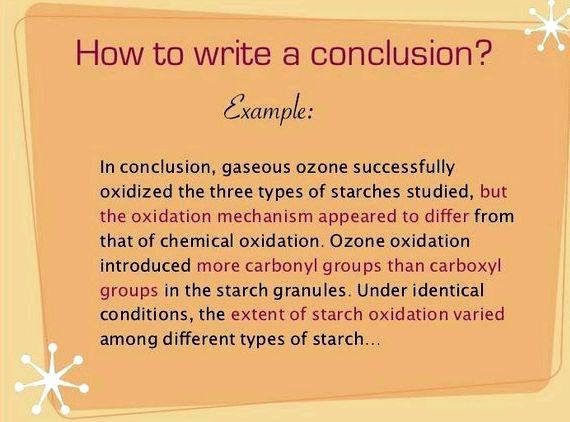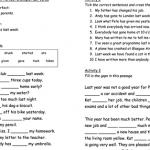What is a Thesis Statement?
Almost all of us&-even if we don’t do it consciously&-look early in an essay for a one- or two-sentence condensation of the argument or analysis that is to follow. We refer to that condensation as a thesis statement.
Why Should Your Essay Contain a Thesis Statement?
- to test your ideas by distilling them into a sentence or two
- to better organize and develop your argument
- to provide your reader with a &”guide&” to your argument
In general, your thesis statement will accomplish these goals if you think of the thesis as the answer to the question your paper explores.
How Can You Write a Good Thesis Statement?
Here are some helpful hints to get you started. You can either scroll down or select a link to a specific topic.
How to Generate a Thesis Statement if the Topic is Assigned
Almost all assignments, no matter how complicated, can be reduced to a single question. Your first step, then, is to distill the assignment into a specific question. For example, if your assignment is, &”Write a report to the local school board explaining the potential benefits of using computers in a fourth-grade class,&” turn the request into a question like, &”What are the potential benefits of using computers in a fourth-grade class?&” After you’ve chosen the question your essay will answer, compose one or two complete sentences answering that question.
Q: &”What are the potential benefits of using computers in a fourth-grade class?&”
A: &”The potential benefits of using computers in a fourth-grade class are. &”
A: &”Using computers in a fourth-grade class promises to improve. &”
The answer to the question is the thesis statement for the essay.
How to Generate a Thesis Statement if the Topic is not Assigned
Even if your assignment doesn’t ask a specific question, your thesis statement still needs to answer a question about the issue you’d like to explore. In this situation, your job is to figure out what question you’d like to write about.
A good thesis statement will usually include the following four attributes:
- take on a subject upon which reasonable people could disagree
- deal with a subject that can be adequately treated given the nature of the assignment
- express one main idea
- assert your conclusions about a subject
Let’s see how to generate a thesis statement for a social policy paper.
Brainstorm the topic .
Let’s say that your class focuses upon the problems posed by changes in the dietary habits of Americans. You find that you are interested in the amount of sugar Americans consume.
You start out with a thesis statement like this:
This fragment isn’t a thesis statement. Instead, it simply indicates a general subject. Furthermore, your reader doesn’t know what you want to say about sugar consumption.
Narrow the topic .
Your readings about the topic, however, have led you to the conclusion that elementary school children are consuming far more sugar than is healthy.
You change your thesis to look like this:
Reducing sugar consumption by elementary school children.
This fragment not only announces your subject, but it focuses on one segment of the population: elementary school children.

Furthermore, it raises a subject upon which reasonable people could disagree, because while most people might agree that children consume more sugar than they used to, not everyone would agree on what should be done or who should do it. You should note that this fragment is not a thesis statement because your reader doesn’t know your conclusions on the topic.
Take a position on the topic.
After reflecting on the topic a little while longer, you decide that what you really want to say about this topic is that something should be done to reduce the amount of sugar these children consume.
You revise your thesis statement to look like this:
More attention should be paid to the food and beverage choices available to elementary school children.
This statement asserts your position, but the terms more attention and food and beverage choices are vague.
Use specific language .
You decide to explain what you mean about food and beverage choices. so you write:
Experts estimate that half of elementary school children consume nine times the recommended daily allowance of sugar.
This statement is specific, but it isn’t a thesis. It merely reports a statistic instead of making an assertion.
Make an assertion based on clearly stated support.
You finally revise your thesis statement one more time to look like this:
Because half of all American elementary school children consume nine times the recommended daily allowance of sugar, schools should be required to replace the beverages in soda machines with healthy alternatives.
Notice how the thesis answers the question, &”What should be done to reduce sugar consumption by children, and who should do it?&” When you started thinking about the paper, you may not have had a specific question in mind, but as you became more involved in the topic, your ideas became more specific. Your thesis changed to reflect your new insights.
How to Tell a Strong Thesis Statement from a Weak One
Remember that your thesis needs to show your conclusions about a subject. For example, if you are writing a paper for a class on fitness, you might be asked to choose a popular weight-loss product to evaluate. Here are two thesis statements:
There are some negative and positive aspects to the Banana Herb Tea Supplement.
This is a weak thesis statement. First, it fails to take a stand. Second, the phrase negative and positive aspects is vague.
Because Banana Herb Tea Supplement promotes rapid weight loss that results in the loss of muscle and lean body mass, it poses a potential danger to customers.
This is a strong thesis because it takes a stand, and because it’s specific.
Your thesis should indicate the point of the discussion. If your assignment is to write a paper on kinship systems, using your own family as an example, you might come up with either of these two thesis statements:
My family is an extended family.
This is a weak thesis because it merely states an observation. Your reader won’t be able to tell the point of the statement, and will probably stop reading.
While most American families would view consanguineal marriage as a threat to the nuclear family structure, many Iranian families, like my own, believe that these marriages help reinforce kinship ties in an extended family.
This is a strong thesis because it shows how your experience contradicts a widely-accepted view. A good strategy for creating a strong thesis is to show that the topic is controversial. Readers will be interested in reading the rest of the essay to see how you support your point.
Readers need to be able to see that your paper has one main point. If your thesis statement expresses more than one idea, then you might confuse your readers about the subject of your paper. For example:
Companies need to exploit the marketing potential of the Internet, and Web pages can provide both advertising and customer support.
This is a weak thesis statement because the reader can’t decide whether the paper is about marketing on the Internet or Web pages. To revise the thesis, the relationship between the two ideas needs to become more clear. One way to revise the thesis would be to write:
Because the Internet is filled with tremendous marketing potential, companies should exploit this potential by using Web pages that offer both advertising and customer support.
This is a strong thesis because it shows that the two ideas are related. Hint: a great many clear and engaging thesis statements contain words like because. since. so. although. unless. and however .
A thesis statement should show exactly what your paper will be about, and will help you keep your paper to a manageable topic. For example, if you’re writing a seven-to-ten page paper on hunger, you might say:
World hunger has many causes and effects.
This is a weak thesis statement for two major reasons. First, world hunger can’t be discussed thoroughly in seven to ten pages. Second, many causes and effects is vague. You should be able to identify specific causes and effects. A revised thesis might look like this:
Hunger persists in Glandelinia because jobs are scarce and farming in the infertile soil is rarely profitable.
This is a strong thesis statement because it narrows the subject to a more specific and manageable topic, and it also identifies the specific causes for the existence of hunger.
Produced by Writing Tutorial Services, Indiana University, Bloomington, IN
wts/shtml_navs/iub.jpg” />
Writing Tutorial Services
Center for Innovative Teaching and Learning
Wells Library Learning Commons, 1320 E. Tenth St. Bloomington, IN 47405
Phone: (812) 855-6738
Comments
Though expectations vary from one discipline to the next, the conclusion of your paper is generally a place to explore the implications of your topic or argument. In other words, the end of your paper is a place to look outward or ahead in order to explain why you made the points you did.
Writing the Conclusion
In the past, you may have been told that your conclusion should summarize what you have already said by restating your thesis and main points. It is often helpful to restate your argument in the conclusion, particularly in a longer paper, but most professors and instructors want students to go beyond simply repeating what they have already said. Restating your thesis is just a short first part of your conclusion. Make sure that you are not simply repeating yourself; your restated thesis should use new and interesting language.
After you have restated your thesis, you should not just summarize the key points of your argument. Your conclusion should offer the reader something new to think about–or, at the very least, it should offer the reader a new way of thinking about what you have said in your paper.
You can employ one of several strategies for taking your conclusion that important step further:
- Answer the question, “So what?”
- Connect to a larger theme from the course
- Complicate your claim with an outside source
- Pose a new research question as a result of your paper’s findings
- Address the limitations of your argument
The strategy you employ in writing a conclusion for your paper may depend upon a number of factors:
- The conventions of the discipline in which you are writing
- The tone of your paper (whether your paper is analytical, argumentative, explanatory, etc.)
- Whether your paper is meant to be formal or informal
Choose a strategy that best maintains the flow and tone of your paper while allowing you to adequately tie together all aspects of your paper.
The Final “So what?” Strategy
Part of generating a thesis statement sometimes requires answering the “so what?” question–that is, explaining the significance of your basic assertion. When you use the “so what?” strategy to write your conclusion, you are considering what some of the implications of your argument might be beyond the points already made in your paper. This strategy allows you to leave readers with an understanding of why your argument is important in a broader context or how it can apply to a larger concept.
For example, consider a paper about alcohol abuse in universities. If the paper argues that alcohol abuse among students depends more on psychological factors than simply the availability of alcohol on campus, a “so what?” conclusion might tie together threads from the body of the paper to suggest that universities are not approaching alcohol education from the most effective perspective when they focus exclusively on limiting students’ access to alcohol.
To use this strategy, ask yourself, “How does my argument affect how I approach the text or issue?”
The “Connecting to a Course Theme” Strategy
When you use the “connecting to a course theme” strategy to write your conclusion, you are establishing a connection between your paper’s thesis and a larger theme or idea from the course for which you are writing your paper.
For example, consider a paper about mothers and daughters in Eudora Welty’s Delta Wedding for a class called “The Inescapable South.” This paper argues that a strong dependence on the mother is analogous to a strong dependence on the South. A “connecting to a course theme” conclusion for this paper might propose that Welty’s daughter characters demonstrate what type of people can and cannot escape the South.
To use this strategy, ask yourself, “What is an overall theme of this course? How does my paper’s thesis connect?”
The “Complicating Your Claim” Strategy
When you use the “complicating your claim” strategy to write your conclusion, you are using one or more additional resources to develop a more nuanced final thesis. Such additional resources could include a new outside source or textual evidence that seemingly contradicts your argument.
For example, consider a paper about Ireland’s neutrality during World War II. This paper argues that Ireland refused to enter the war because it wanted to assert its sovereignty, not because it had no opinion about the conflict. A “complicating your claim” conclusion for this paper might provide historical evidence that Ireland did aid the Allies, suggesting that the Irish were more influenced by international diplomacy than their formal neutrality might suggest.
To use this strategy, ask yourself, “Is there any evidence against my thesis?” or “What does an outside source have to say about my thesis?”
The “Posing a New Question” Strategy
When you use the “posing a new question” strategy to write your conclusion, you are inviting the reader to consider a new idea or question that has appeared as a result of your argument.
For example, consider a paper about three versions of the folktale “Rapunzel.” This paper argues that German, Italian, and Filipino versions of “Rapunzel” all vary in terms of characterization, plot development, and moral, and as a result have different themes. A “posing a new question” conclusion for this paper might ask the historical and cultural reasons for how three separate cultures developed such similar stories with such different themes.
To use this strategy, ask yourself, “What new question has developed out of my argument?”
The “Addressing Limitations” Strategy
When you use the “addressing limitations” strategy to write your conclusion, you are discussing the possible weaknesses of your argument and, thus, the fallibility of your overall conclusion. This strategy is often useful in concluding papers on scientific studies and experiments.
For example, consider a paper about an apparent correlation between religious belief and support for terrorism. An “addressing limitations” conclusion for this paper might suggest that the apparent correlation relies on the paper’s definition of “terrorism” and, since the definition is not objective, the apparent correlation might have been wrongly identified.
To use this strategy, ask yourself, “In what aspects is my argument lacking? Are there circumstances in which my conclusions might be wrong?”
Polishing Your Conclusion–and Your Paper
After you’ve completed your conclusion, look over what you have written and consider making some small changes to promote clarity and originality:
- Unless your discipline requires them, remove obvious transitions like “in conclusion,” “in summary,” and “in result” from your conclusion; they get in the way of the actual substance of your conclusion.
- Consider taking a strong phrase from your conclusion and using it as the title or subtitle of your paper.
Also, be sure to proofread your conclusion carefully for errors and typos. You should double-check your entire paper for accuracy and correct spelling as well.
Produced by Writing Tutorial Services, Indiana University, Bloomington, IN
wts/shtml_navs/iub.jpg” />
Writing Tutorial Services
Center for Innovative Teaching and Learning
Wells Library Learning Commons, 1320 E. Tenth St. Bloomington, IN 47405
Phone: (812) 855-6738
Comments






 Master thesis writing tense worksheets
Master thesis writing tense worksheets Apa style of writing phd thesis
Apa style of writing phd thesis Uwb antenna design thesis proposal
Uwb antenna design thesis proposal Self plagiarism phd thesis writing
Self plagiarism phd thesis writing Bboy lilou vs thesis proposal
Bboy lilou vs thesis proposal






